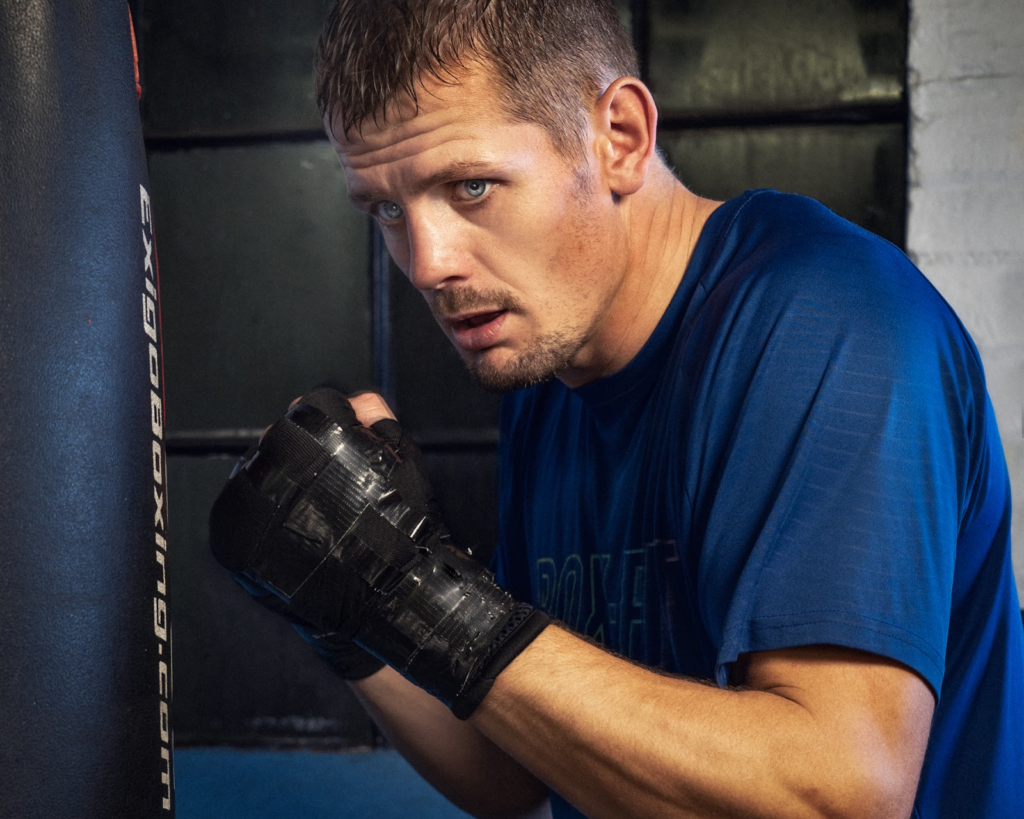Photography for SEO
Professional photography is essential for businesses, freelancers and anyone trying to build their brand. What you may not know is that quality photos can also benefit your Google ranking! That’s right, the images you use on your website can make or break a page’s SEO.

I’ve teamed up with expert content and copy writer Nathan Locke for this blog.
Why Professional Photography is Important for Businesses
You want photographs to reflect you and your business, not every business in your industry.
The Limitations of Stock Photography
When you’re just staring out in business, you use stock photography because it’s quick and relatively inexpensive. It is better than no images at all.
However, stock photos are, by their very nature, impersonal. They’re designed to broadly fit as many businesses as possible so the photographer can sell the same photos to as many businesses as possible.
Using the same photos as other businesses in your industry hides your unique offering because you look the same.
Credibility
Professional photographs make you look like an established brand. New businesses have bad, stock or no photos. Established businesses have outstanding, considered and personal photographs.
Trust
Showing photographs that really are your business and your team shows you’ve nothing to hide, that you want to share what you have to offer and what you’re offering is awesome.

Using the same photographer for all your imagery creates consistency and consistency fosters trust. People start to feel like they know you. I recently had a message on one of my posts saying, “I feel like I know you already from your posts”. I’m consistent in how often I post, but also, all my images are by the same photographer – me.
Profit
The recent IRCE report revealed that 75% of people said image quality was the most important feature when shopping online. This was talking about products, but the same applies if you’re offering a service because then you’re the product. People want to know what you look like. If they like your images, they’re more likely to engage with you and ultimately become your client.
High Speed Communication
It’s not just your face people are looking at in images. Other elements may only be absorbed at a subconscious level though. That sub-conscious is incredibly powerful because it’s all emotional and we are emotional buyers.
Absorbing information through an image is far quicker than reading text or waiting for a video to unfold. That said, your text, images and videos should all complement each other.

Emotion
We are emotional beings and so it’s not surprising that we buy with our emotions. In order to design photographs that engage your audience emotionally, you have to understand your audience: What do they respond to? What do they care about? Are they aspirational or do they want a brand that feels comfortable? If they look for luxury, what does luxury look like to them?
If you know your audience, then you can bring elements into your photographs that connect emotionally without a word.
Why Headshots are Important
Facial recognition is so important to us that there’s a whole section of our brains solely dedicated to it. When we see a face, we get a little buzz. It’s the same buzz you get when you’re at a networking meeting and you find someone who grew up in the same town as you or you both love the same music and film – you feel a connection. How you present yourself can either increase or decrease that sense of connection.

Telling Details
There’s a reason why Tinder is so popular and, often, successful in matching couples. You’d think temperament, passions and geography would override looks, but people want to see what you look like because looks are very telling.
Every detail (or absence of) in your headshot is communicating something – clothing, hair, jewellery, watches, tattoos, piercings, body language and most important of all, facial expression. All of these things signal whether or not you’re the viewers kind of person. They want to feel as though they know you, like you and can trust you. You can pick a lot of this up from a good headshot.
What You Do at a Glance
There’s a standard headshot pose and you probably know what I’m talking about before I describe it. I’m guilty of having this pose in my own headshot. It’s the crossed arms, white/grey background, looking straight to camera. A newer style has arisen over the last few years, it’s very similar but with a solid colour background instead of white. When people first changed to a solid colour it stood out, now it’s starting to blend.
If you can bring something of what you do into the headshot, it’s more likely to feel genuine and instantly communicate what you have to offer. It also separates you from the mass of people with crossed arms.
Why Photoshoots are Important
The real advantage of a photoshoot is that you have the luxury or choice.
You choose exactly what does and does not go into the photograph. The photographer then creatively and beautifully interprets your vision and brings it to life in a series of photographs.

Mood Boards
Some people know exactly what they want while others are less sure. Rather than being disappointed by the final image, I ask my clients to contribute to a mood board. I add photographs and images that seem to reflect what my client’s said to me. The client can then add more photographs they love, delete any they don’t like and make notes about what in particular grabs them. The process helps build a picture.
This is the process of creativity. It’s simply taking different elements you love and fusing them together into something new. You and the photographer combine your experience and expertise in your business with their photographic knowledge.
Creative Elements
Some of the elements you’ll want to discuss with your photographer are:
- Light and shadow: This sways our emotional response, how bright or dark the overall photograph is, areas of high contrast, how hard or soft the transition from light to dark. Just think about your response to a grey day compared to a sunny summer’s day.
- Colour Combinations: What colours work together to complement your brand, each other and which colours will come to the front of the image and cause others to recede. E.g. red tends to dominate and come to the front. Every colour in the photograph (clothing, background, props) and how it’s placed is significant.
- Colour Association: The associations specific colours conjure for your audience. E.g. Red is for passion, power and love, blue is trustworthy and often used by banks (Barclays, RBS, Coop, Nationwide, Halifax, TSB).
- Composition: Where you want the main focus of the image to be, how to direct the viewer’s eye around the photograph and what angle you come at the subject from all have an emotional impact.
- Symbols: Symbols often signal a luxury brand and should be incorporated into your photographs. They can be anything from red stiletto shoes to a polo player.
- Facial Expression: If you have people in your photographs (and remember faces generate a little buzz of excitement in us) then the body language and facial expression are the most important elements because they will connect most deeply with the viewer.

There are a lot of choices and each one builds the impact of your final photographs.
Conclusion
What makes photographs so powerful is the speed at which they communicate information, but more especially, the feeling your viewers imbibe. Even headshots tell us about each other. There are so many elements you can choose to include or exclude in your photographs so use each one to communicate.
Stock imagery is designed to be purchased by the greatest number of people, so if you use it, your USP will be hidden. They illustrate the type of business you run, not your business.
So, wherever possible, arrange a photoshoot with a photographer who offers bespoke shoots so that you have the luxury or choice. Combine your expertise in your business with the photographer’s knowledge of composing imagery – the results will be unique to you.
How to Optimise Images for SEO
Thanks Nina! Now we’ve talked about why professional photos are so important, let me explain how to make the most out of them.
How Images Boost SEO
Quality images do more than just make your web pages look good. Every image you use on your site can have alt text (alt tags) added. This adds an unseen description to the image or other piece of media that Google and other search engines (SEs) will ‘read’ as they index the page. Without alt text, SEs will know that there is an image on the page, but not what the image is or if it is relevant to the content surrounding it.
Alt text is also important for human readers too, as it is a huge help for accessibility. Alt text is read by screen reading software so readers who can’t see or need audio description know what is in the image.
Accessibility is one of the most important things to consider when building or updating your website, and adding alt text is a simple way to make your site more accessible while also improving SEO.

A picture paints a thousand words – use them to tell your story!
How to Optimise Photos for SEO
Images are great for SEO, but only if they’re used correctly. Throwing non-optimised images into the mix can harm your SEO as much as optimised ones will help it.
The easiest mistake to make is uploading pictures with large file sizes. Images bigger than 200kb can slow the page down massively, making scrolling a pain and loading times much longer than they should be.
High-quality photos are hard to keep small, and just shrinking the pixel size can turn a fantastic photo into a blurry mess. Thankfully there are a range of website plugins that can compress images without sacrificing quality. For more generic images like banners, you can change the format to Jpeg to reduce the file size. This harms the quality, so be sure to save a copy in the other format just in case it doesn’t look right.
Keeping images small helps the pages load faster and be easier to navigate on mobile. Alongside alt text, this will help optimise images so they look great and increase traffic.
When choosing images, always keep mobile users in mind. The majority of SEO traffic can come from phones – a website that isn’t mobile optimised will miss out on a lot of potential clients and customers.
Do Stock Photos Improve SEO?
Using stock photos is very common for business sites, but they should only be a placeholder until you put your unique images in place. A professional photoshoot from someone like Nina is not only a fun bonding activity for the team, but those images can boost your SEO ranking as well!
As Nina said, stock photos are impersonal and very limiting. If the same image is used on a thousand different sites, Google will notice, and penalise your pages as it’s considered ‘low effort’. Having a photoshoot or even just a few quality headshots that are unique to your website will give each page a noticeable boost!

Whether you are a band or a brand, a professional photoshoot is what you need!
How Photos Complement Copy
Nothing puts readers off like a wall of text! Breaking up your copy with headings and paragraphing goes a long way, but to really make the page appealing you need to add images.
We’ve already discussed how alt text can add to an image, but there’s a less subtle way to add more. Every image you use alongside body copy should have a caption. A few words or a short sentence adds extra context and can be a great way to make the blog feel more personal.
Here’s an example:
Imagine you’ve just been to an Awards ceremony for people in your industry, and you won a shiny gold trophy for your hard work. Naturally you’ll want to take a few pictures to mark the occasion (with a big smile and the trophy front and centre!).
Once the festivities have ended, you should always create a new blog post talking about it. Nothing makes a business more successful than success! When the copy is written, you choose a few selfies to go with it.
Underneath the pictures, you add funny or heartwarming captions that your readers will enjoy. Something like: ‘[X] years in the making, but this is just the beginning!’ or even just: ‘we won!’
It’s a simple addition, but will warm the hearts of any readers, while also telling them you’re one of the best!
AI Images
If you’re taken even a cursory glance at social media or the news in the last few months, you’ll be aware that AI is a huge topic in the world of media.
Some artists, copywriters and, of course, photographers are worried about the surge of AI-created content that is diluting the industry. However, as we’ve seen more and more AI generations, the cracks are starting to show.
AI portraits look fine at first, but the AI is still struggling with some of the elements that make us human. Mostly hands, teeth and eyes are the sticking points. Once you look closer you see things that aren’t quite right, and some generations are more body-horror than quality portraits.
AI will improve, but it will be a long time before what it creates can match a professional’s work. Don’t wait for AI updates, bring in a human who will do it better.
Images for Social Media
Every business needs a presence on multiple social media platforms to keep up with the competition. If you’ve spent more than 30 seconds scrolling through any of the major platforms, you’ll know that images are the way to go.
The Meta-owned platform (Facebook and Instagram) are the most prominent, with billions of active users between them. Instagram especially is image-focused, with only a small space below the picture for text that can be scrolled past at speed.
Both these platforms promote user accounts and businesses that use higher quality images for their posts. Just another reason to bring in a professional like Nina to help you show off what you do and who you are.

If you’re the face of your business, don’t be afraid to put it out there!
The quality isn’t the only thing that can be a factor on Meta-owned sites. This is a bit more tinfoil-hat, but the evidence is in plain sight if you know where to look.
Meta has partnerships with Adobe and Canon, and promotes images taken with Canon cameras and edited with Adobe software more than their equivalents. Unless you’re an SEO consultant who spends their hours staring at graphs and changing numbers, you won’t notice this bias much, but it’s something interesting to keep in mind next time your editing subscription runs out.
Simply put, better images do better on social media, especially if you add quality content to your posts to give them a boost.
Conclusion
So, if you weren’t already convinced by Nina’s incredible insight into the world of professional photography, I hope my breakdown of how images boost SEO sealed the deal.
Unless you’re a copywriter hunting for typos, you’ll know that images are much better to look at than walls of text. Quality images do so much more than just look good, but only if you know how to get the most out of them.
Once again, a huge thanks to Nina Carrington for her half of this blog. She opened my eyes to how professional photography is far more than just point-and-click! If you need some updated images for your website or social media, I couldn’t recommend her more.
